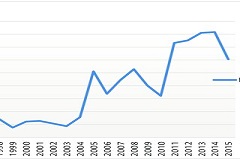Roadmap to revalue rurality through behavior of demographic dynamics
Keywords:
revaluing rurality, demographic dynamics, development strategiesAbstract
Take advantage of the existing potentialities and opportunities to move towards technological change, from the innovation of productive processes in agricultural and agricultural activities; diversify economic activity, strengthen social services and ensure inter-municipal articulation, creating productive chains that close cycles; reconstruct the identity and cultural patterns of the rural, according to the characteristics of each region, rescuing traditions, values; as well as promoting the socioeconomic competitiveness of rural areas so that they become spaces of opportunity for the population, are some of the lines of work proposed in the roadmap to revalue rurality taking into account the behavior of demographic dynamics as part of sociodemographic characterization in the design and management of development strategies.
References
Aja, A. (2015). La experiencia de Cuba en la realización de los proyectos de capacitación e investigación en población y Desarrollo Local. Novedades en Población, 11(22), 1-25.
Araujo, R. (2016). Desarrollo local y trabajo comunitario: la experiencia del CEDEM-UH en el marco de P misión Económica para América Latina y el Caribe (CEPAL). (2018). La Agenda 2030 y los Objetivos de Desarrollo Sostenible Una oportunidad para América Latina y el Caribe. Santiago de Chile: Naciones Unidas.
Comisión Económica para América Latina y el Caribe (CEPAL). (2019). Planificación para el desarrollo territorial en América Latina y el Caribe (LC/CRP.17 /3). Santiago de Chile: Naciones Unidas.ADIT. Novedades en Población, 12(24).
Comité Central del Partido Comunista de Cuba. (2021). Lineamientos de la política económica y social del partido y la revolución. VII Congreso del Partido Comunista de Cuba. La Habana.
MEP. (2018). Herramientas de planificación y financiación para el desarrollo integral territorial. La Habana: MEP.
EP. (2021). Plataforma Articulada para el Desarrollo Territorial (PADIT). La Habana: MEP.
Oficina Nacional de Estadísticas e Información. (2010). Anuario Estadístico de Camagüey. 2011. Camagüey
Oficina Nacional de Estadísticas e Información. (2015). Proyecciones de los hogares cubanos, 2015-2030. La Habana.
Orbea, M., Araujo, R., & Griñán, D. (2019). Guía Rápida de Población. La Habana: CEDEM.
quiroga Gómez, Z., De Dios Martínez, A., & Pérez Rangel, M. (2019). Enfoque poblacional en los planes de ordenamiento territorial. Retos de la dirección 2019, 69-85.

Downloads
Published
How to Cite
Issue
Section
License

This work is licensed under a Creative Commons Attribution-NonCommercial-NoDerivatives 4.0 International License.
- Sending a contribution to the Cuban Magazine of Finance and Prices (RCFP) implies a non-exclusive assignment of rights, which includes: Reproduce the Article in whole or in part and communicate the Article to the public in print or electronic format, combined or not with the works of third parties, such as by making the Article available to the public via the Internet or any other network, as part of a database, with on-line or off-line access, for use by third parties; Translate the Article into other languages and release the translation to the public; Create adaptations, summaries, or excerpts of the Article and other derivative works thereof, and exercise all of your rights in such adaptations, summaries, excerpts, and derivative works; Include the Article, either in its translated, adapted or summarized version, totally or partially, in a computerized database and make it available to third parties; Include the Article, totally or partially, either in its translated, adapted or summarized version, in a selection or compilation of texts; Rent or lend the Item to third parties; Reproduce the Article by means of reprography, without prejudice to legal limitations.
The Author of articles published in the Cuban Magazine of Finance and Prices (RCFP) may exercise the following rights:
- Reproduce the Article, totally or partially, and disseminate its content or make it available to the public, in printed or electronic format, as part of a teaching content or as a compilation, for use in the academic or research field in the institution to the one to which the Author belongs or in those institutions to which he belongs.
- Publish the Article on the Internet or authorize the Author's institution (or any other appropriate organization) to do the same, immediately from the date of publication of the Article in the journal: within the institution's closed network (p. eg, the intranet); or in publicly accessible institutional repositories or centrally organized repositories, provided that a link to the Article is included on the journal's website.
- Grant to the Author's own institution (or any other appropriate organization) the authorization to reproduce the Article in order to prevent its deterioration or, if the original is in an obsolete format or the technology to use it is not available, in order to ensure that the Article remains available for teaching or research purposes;
- Present the Article at a meeting or conference, and distribute copies of the Article to those attending the event.
- Grant end users at the Author's own institution (or any other appropriate organization) permission to copy, use, transmit, and publicly perform the work and to create and distribute derivative works.



